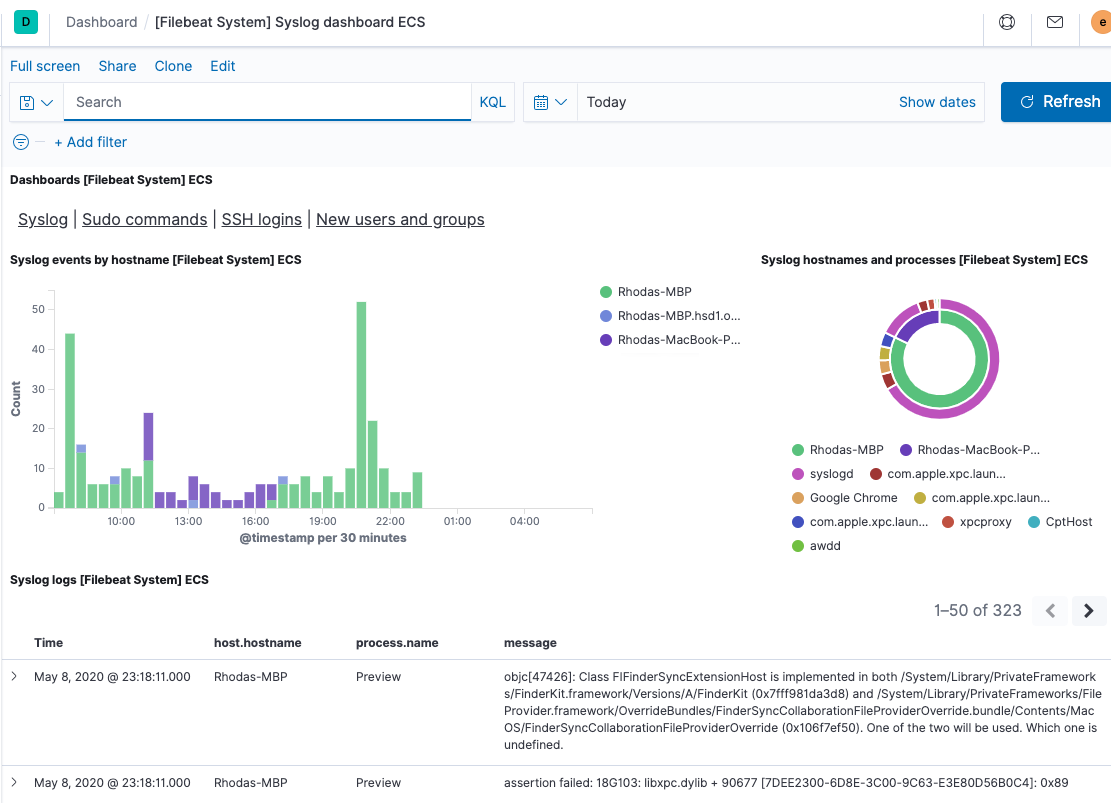

- Docker syslog separate errors how to#
- Docker syslog separate errors driver#
However containers will have IPs assigned from the specified networks. If you join the pod’s containers to other networks, the pod will still have its IP assigned from the default network. “ īy default pods will connect to network labeled cni_default_network in nf. Port bindings, cgroup-parent values, and kernel namespaces are all assigned to the “infra” container.

“Most of the attributes that make up the Pod are actually assigned to the “infra” container. This is the reason why I stick to the default network in my setup. According to my understanding this will be changed later. But a pod can be only joined to the default network. You can join a container to any networks. Assign IP addresses to pods and not to containers Podman is around for a while and is rapidly evolving. Migrating to a new technology is not without compromises or challenges. This way containers of any pods could only access ports published by other pods and not the containers themselves. Pods provide another layer of isolation I really like. Figure 2: Network architecture of services orchestrated by Podman With Podman by using pods there is only 1 network for 5 pods (Figure 2). With Docker (Figure 1) there are 5 networks for 9 containers. So all containers in the same pod looks like sharing the same localhost network. Containers in a pod shares the same namespace, like network. This is intentionally very similar to Kubernetes’ pods. Podman supports the concepts of pods for instance. There is a very fundamental difference between Docker and Podman.

Planning the conversion of docker-compose services to pods
Docker makes these networking possible with lots of iptables rules (so as Podman) which are hard to overview and pollute the iptables rules you may already have. However, this way the proxy container could access all exposed ports of all containers on any networks the proxy container is attached to. The network of Reverse Proxy has to be literally connected to all other bridges to have access to the web servers. Therefore you have to create many networks, which in turn improves complexity. Docker syslog separate errors driver#
All networks use a bridge network driver to provide network isolation of service groups. Figure 1: Network architecture of services orchestrated by docker-composeĪlthough this system worked pretty well, I have some issues with it. Although the picture may indicate, the reverse proxy is not the gateway for the containers. The following simplified figure shows a high level overview of the network architecture. In my lab docker-compose took care of composing all services with a single YAML file. So I started off with my home lab which hosts different systems. The basis of migrationĪny migration requires planning and testing. And I am also aware that some issues are container technology related, so they may apply to Podman containers as well. I know some of these reasons may not apply to recent versions of Docker. Some of them are already explained in posts like top 10 Docker logging gotchas. Like “ Don’t run more than one process in a single container” – Have you seen GitLab’s official Docker image? Inconsistency between recommendations and real life experience. I learned the hard way why putting a production SQL database (state-full) into a container is a NO GO. But there are legit cases where containers may run on a host serving other purposes as well. This may not be a problem where a host OS’ only role is to run containers. Too many fiddling with iptables rules on a system using firewalld. Recurring errors like failing to create many bridged network at once on a clean system, claiming ‘ ERROR: Pool overlaps with other one on this address space‘. Leaving important security requests open for years. Closing issues with an attitude of ‘we don’t really care’. Here are the top reasons why I decided to convert my docker-compose services to pods with Podman and get rid of Docker completely. However there are things I cannot easily forget. Call me an old fashioned but I always managed to set up systems either with pure Docker containers or with docker-compose. Both in production and in different labs. I have been using Docker’s container technology for about 4-5 years. The reasons why I convert docker-compose services to pods But I wanted to get rid of Docker completely and migrate my docker-compose services to pods with Podman. Convert your docker-compose services to pods with Podman.įor a single host setup or even for a now officially dead Docker Swarm setup using docker-compose is pretty convenient. Docker syslog separate errors how to#
How to deploy pods with Podman when you only need a single-host system and not a complex Kubernetes.







 0 kommentar(er)
0 kommentar(er)
